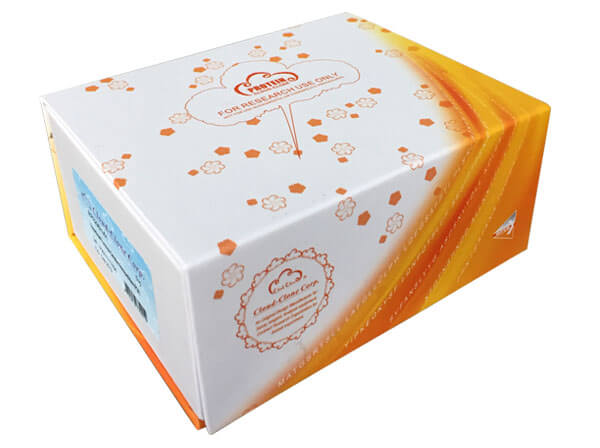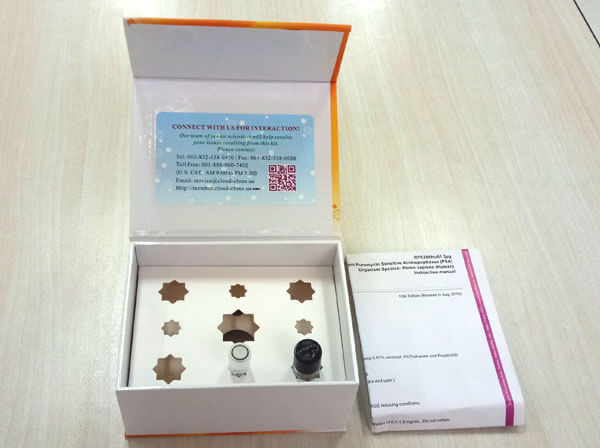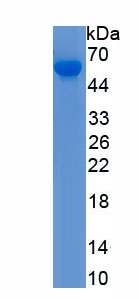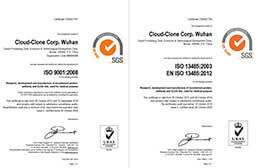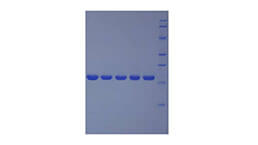Active Proenkephalin (PENK) 

Preproenkephalin; Proenkephalin-A; Synenkephalin; Met-enkephalin; Met-enkephalin-Arg-Gly-Leu; Leu-enkephalin; Met-enkephalin-Arg-Phe
- UOM
- FOB US$ 220.00 US$ 550.00 US$ 1,100.00 US$ 3,300.00 US$ 8,250.00
- Quantity
Overview
Properties
- Product No.APD396Mu01
- Organism SpeciesMus musculus (Mouse) Same name, Different species.
- ApplicationsCell culture; Activity Assays.
Research use only - DownloadInstruction Manual
- CategoryNeuro science
- Buffer FormulationPBS, pH7.4, containing 0.01% SKL, 5% Trehalose.
- Traits Freeze-dried powder, Purity > 95%
- Isoelectric Point5.3
Sign into your account
Share a new citation as an author
Upload your experimental result
Review

Contact us
Please fill in the blank.
Activity test
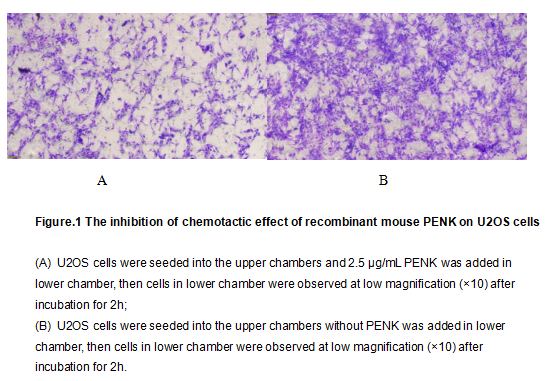
Proenkephalin (PENK) is a protein encoded by the PENK gene. It is initially synthesized as a preproprotein and undergoes proteolytic processing to generate multiple products. As PENK has the function of inhibit the migration cells,we measure the activity of recombinant mouse PENK by the ability of the protein to inhibit the migration of U2OS cells. Thus, chemotaxis assay used 24-well microchemotaxis system was undertaken to detect the inhibition of chemotactic effect of recombinant mouse PENK on U2OS cell line. Briefly, U2OS cells were seeded into the upper chambers and PENK was added in lower chamber with a polycarbonate filter (8 μm pore size) used to separate the two compartments. After incubation at 37℃ with 5% CO2 for 2h, the filter was removed, then cells in low chamber were observed by inverted microscope at low magnification (×10) and the number of migrated cells were counted randomly (five fields for each filter). Result shows MIP-3α is able to induce migration of U2OS cells. The migrated U2OS cells in low chamber at low magnification (×10) were shown in Figure 1.
Usage
Reconstitute in ddH2O to a concentration of 0.1-0.5 mg/mL. Do not vortex.
Storage
Avoid repeated freeze/thaw cycles. Store at 2-8°C for one month. Aliquot and store at -80°C for 12 months.
Stability
The thermal stability is described by the loss rate. The loss rate was determined by accelerated thermal degradation test, that is, incubate the protein at 37°C for 48h, and no obvious degradation and precipitation were observed. The loss rate is less than 5% within the expiration date under appropriate storage condition.
Increment services
-
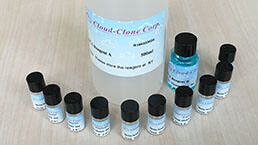 BCA Protein Quantification Kit
BCA Protein Quantification Kit
-
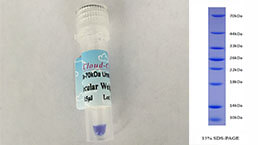 Molecular Mass Marker for Protein
Molecular Mass Marker for Protein
-
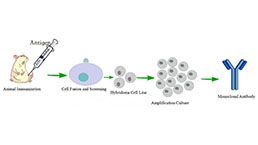 Monoclonal Antibody Customized Service
Monoclonal Antibody Customized Service
-
 Polyclonal Antibody Customized Service
Polyclonal Antibody Customized Service
-
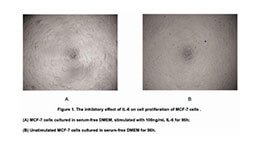 Protein Activity Test Experiment Service
Protein Activity Test Experiment Service
-
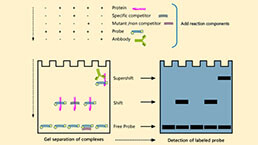 Electrophoretic Mobility Shift Assay (EMSA) Experiment Service
Electrophoretic Mobility Shift Assay (EMSA) Experiment Service
-
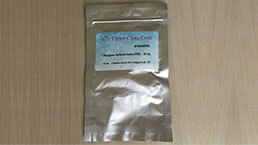 Buffer
Buffer
-
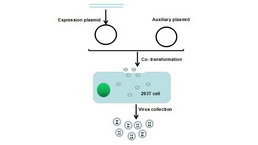 Lentivirus Packaging Experiment Service
Lentivirus Packaging Experiment Service
-
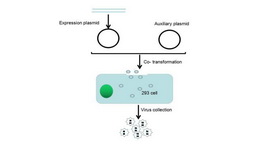 Adenovirus Packaging Experiment Service
Adenovirus Packaging Experiment Service
-
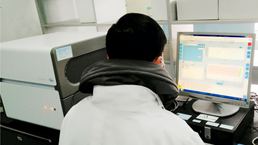 Real Time PCR Experimental Service
Real Time PCR Experimental Service
-
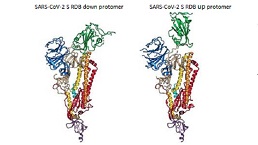 Spike RBD Protein (S-RBD)
Spike RBD Protein (S-RBD)
-
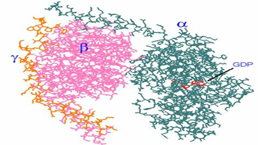 Protein G
Protein G
-
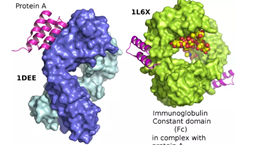 Protein A
Protein A



